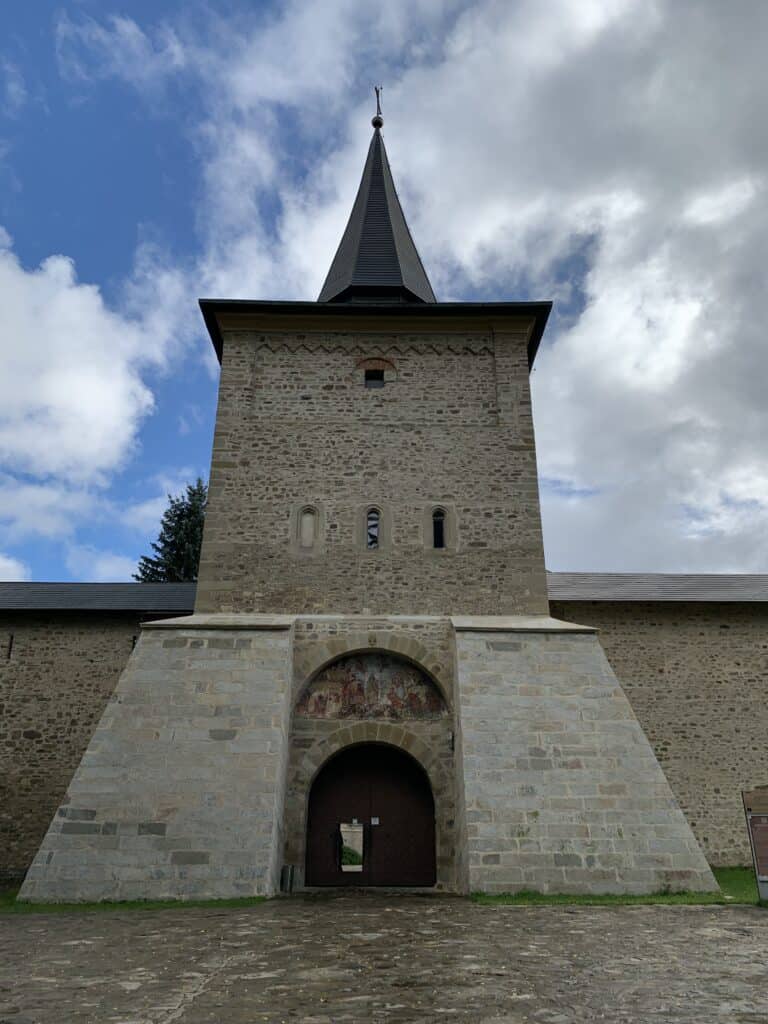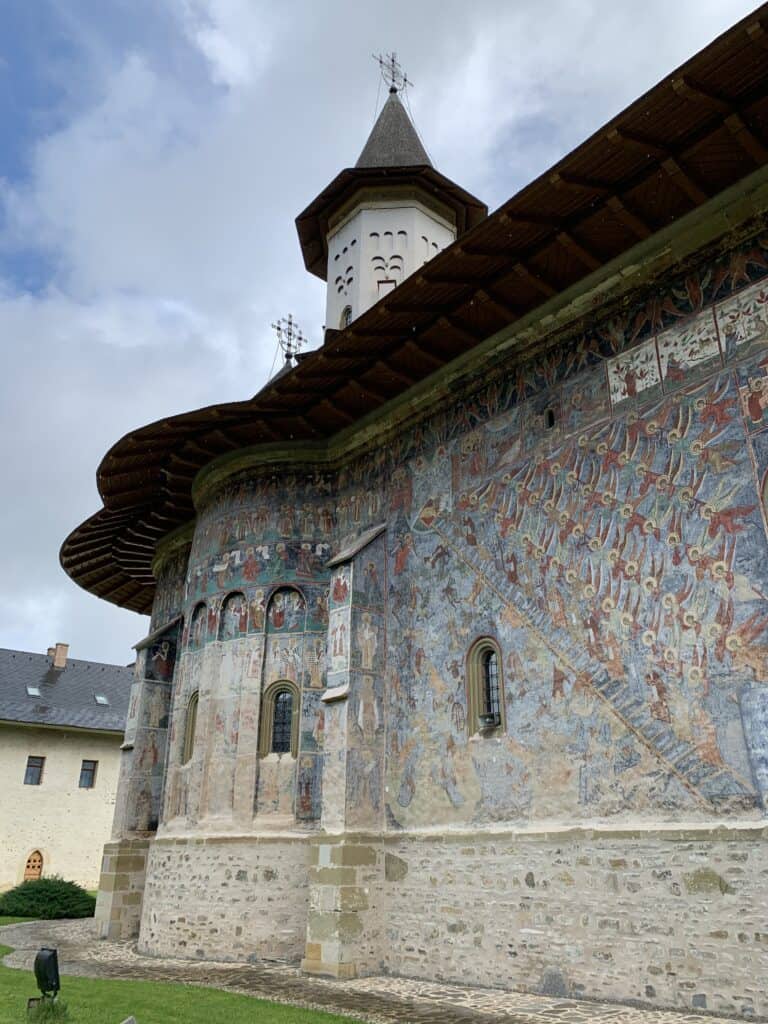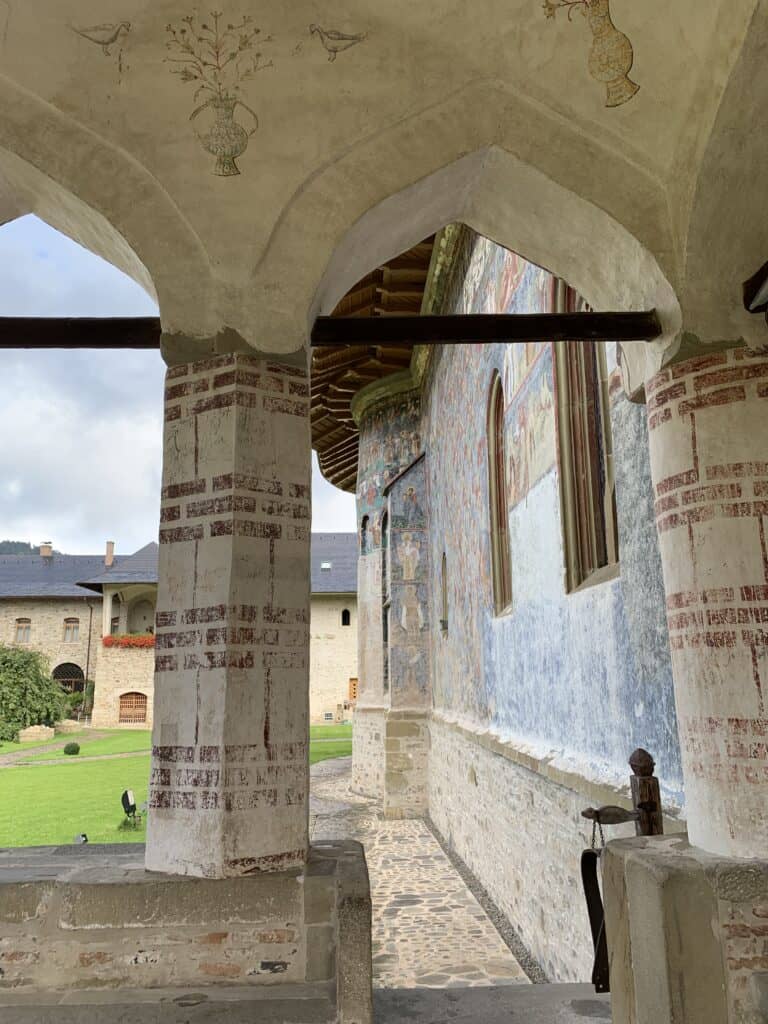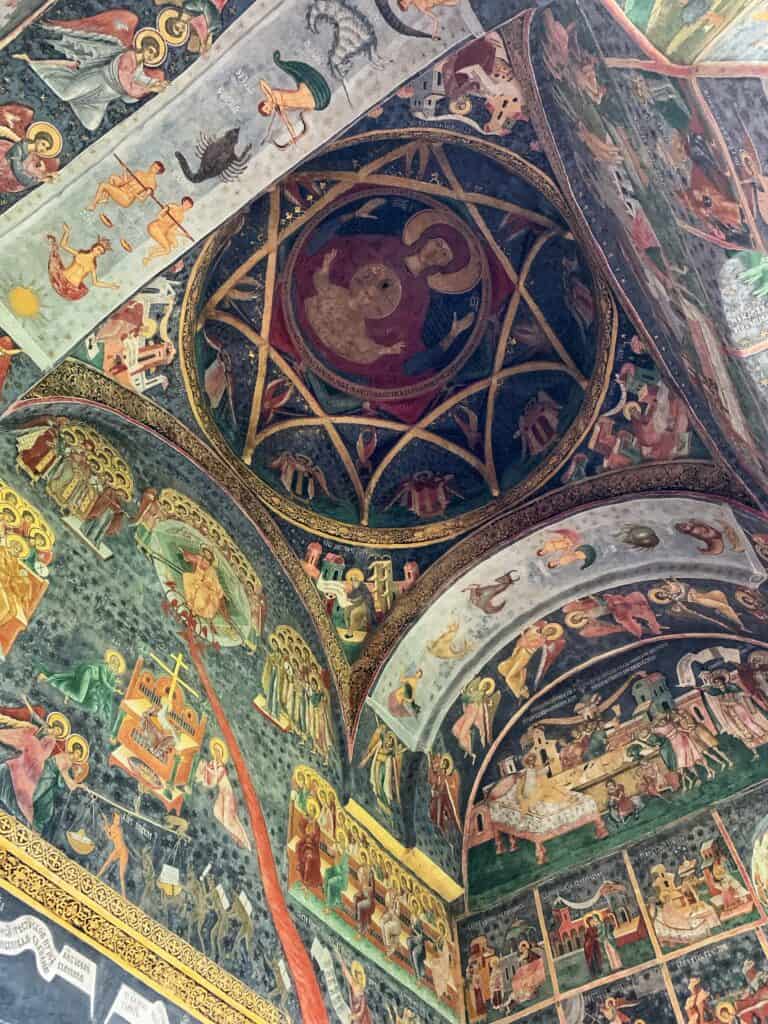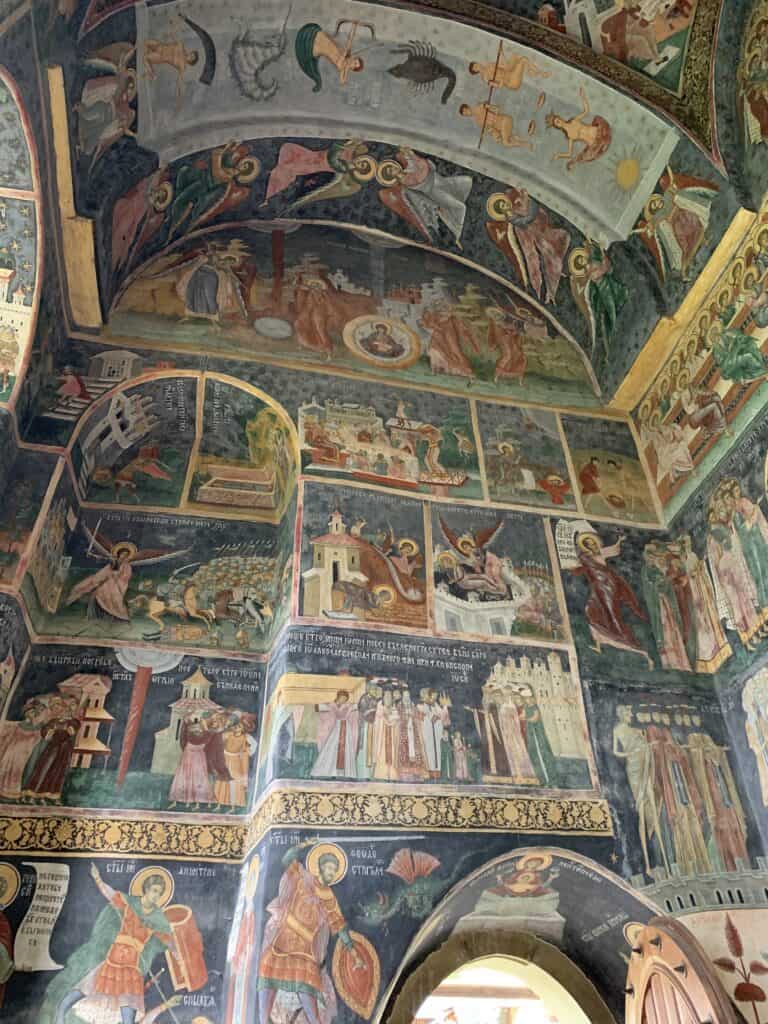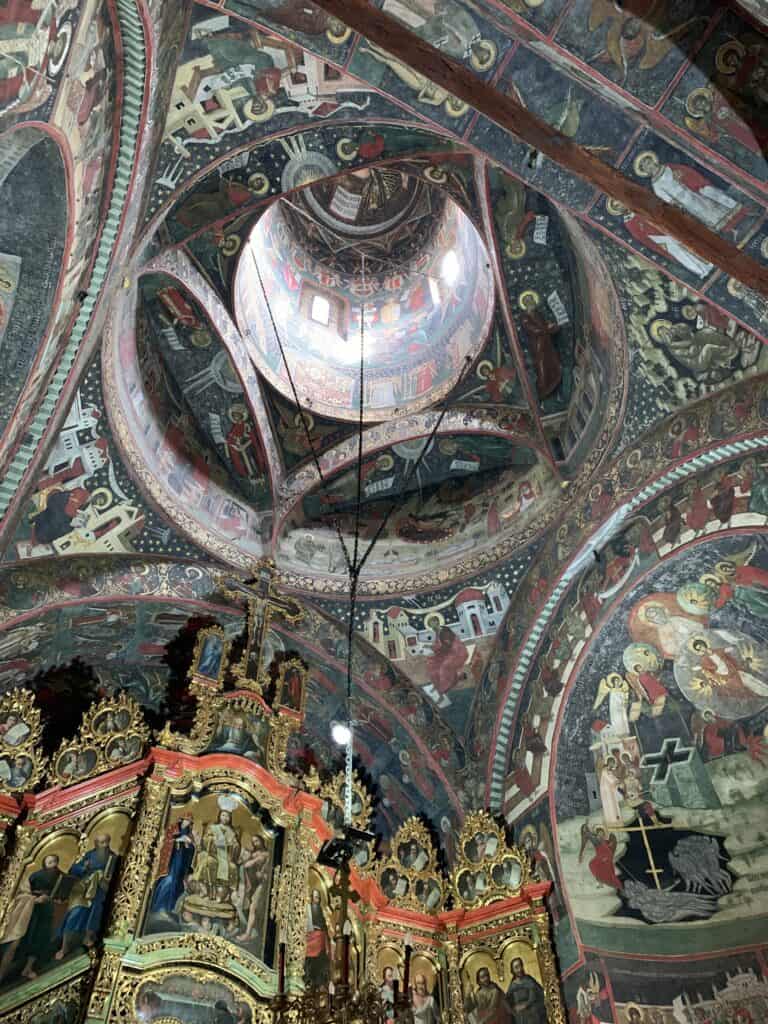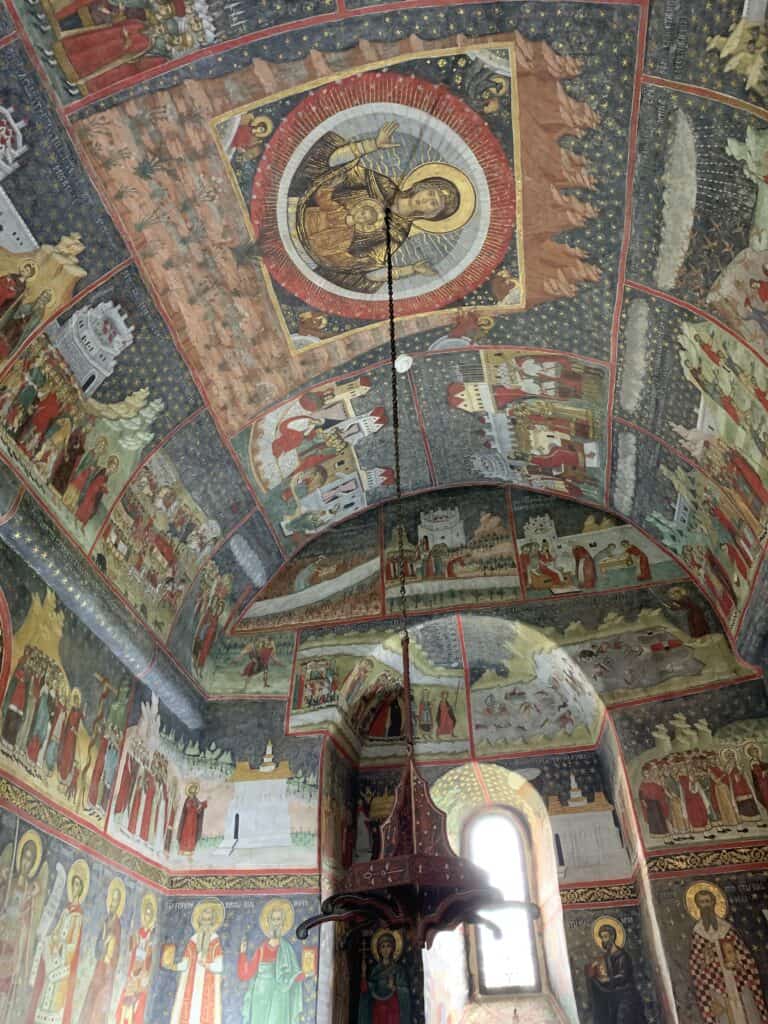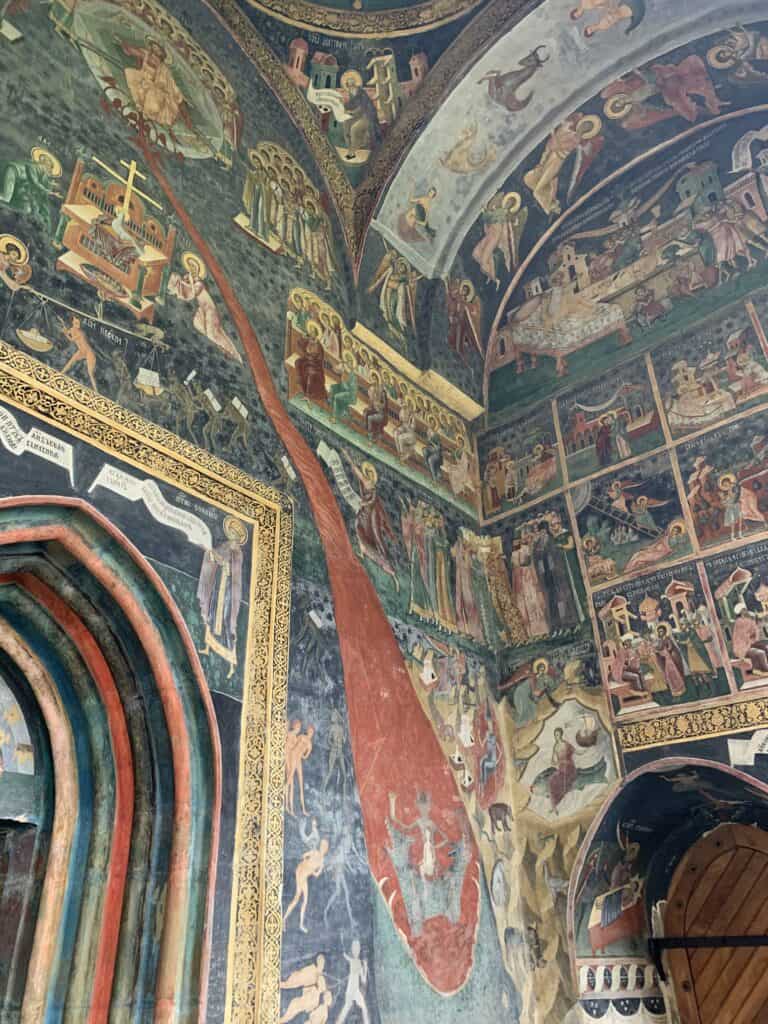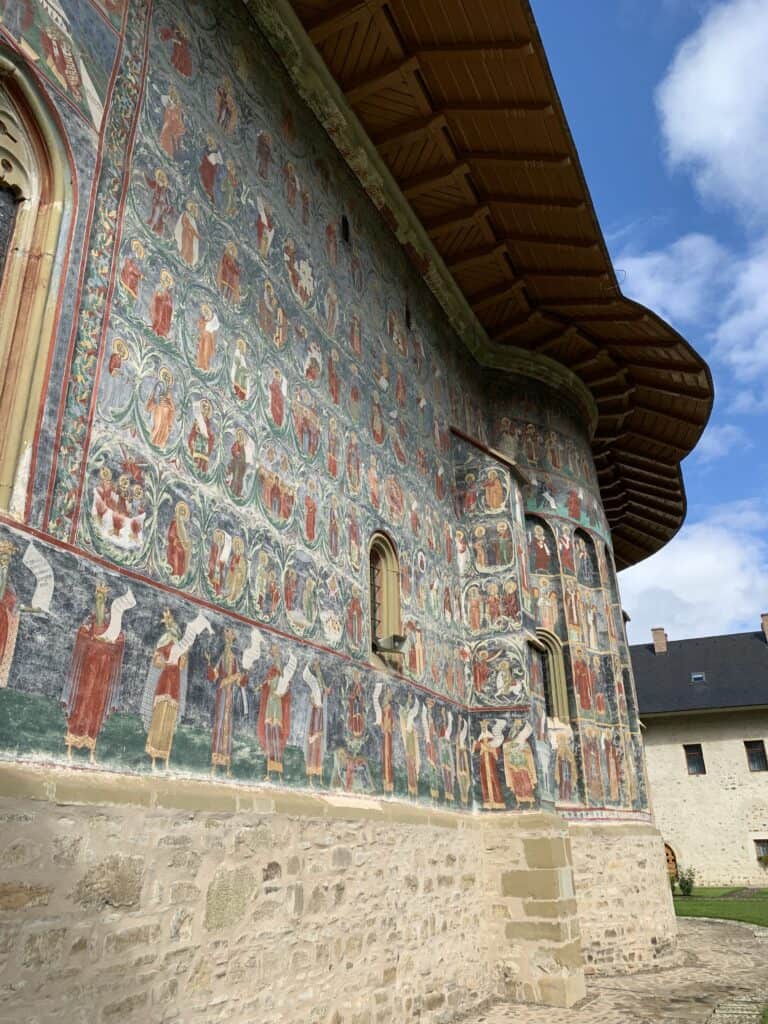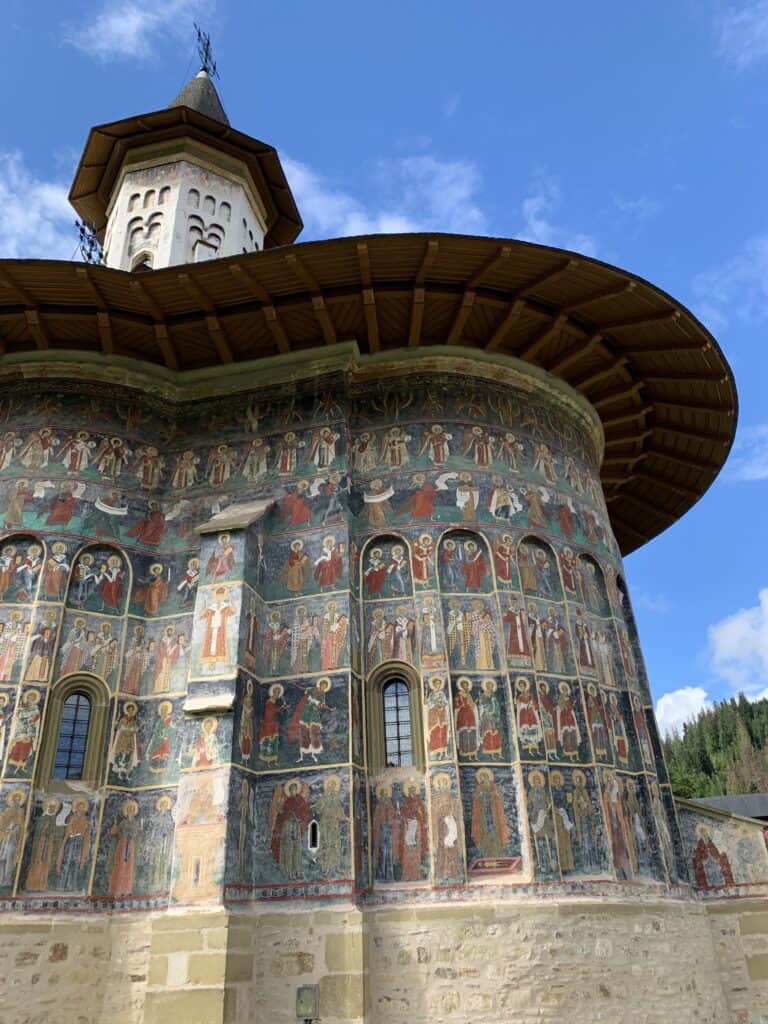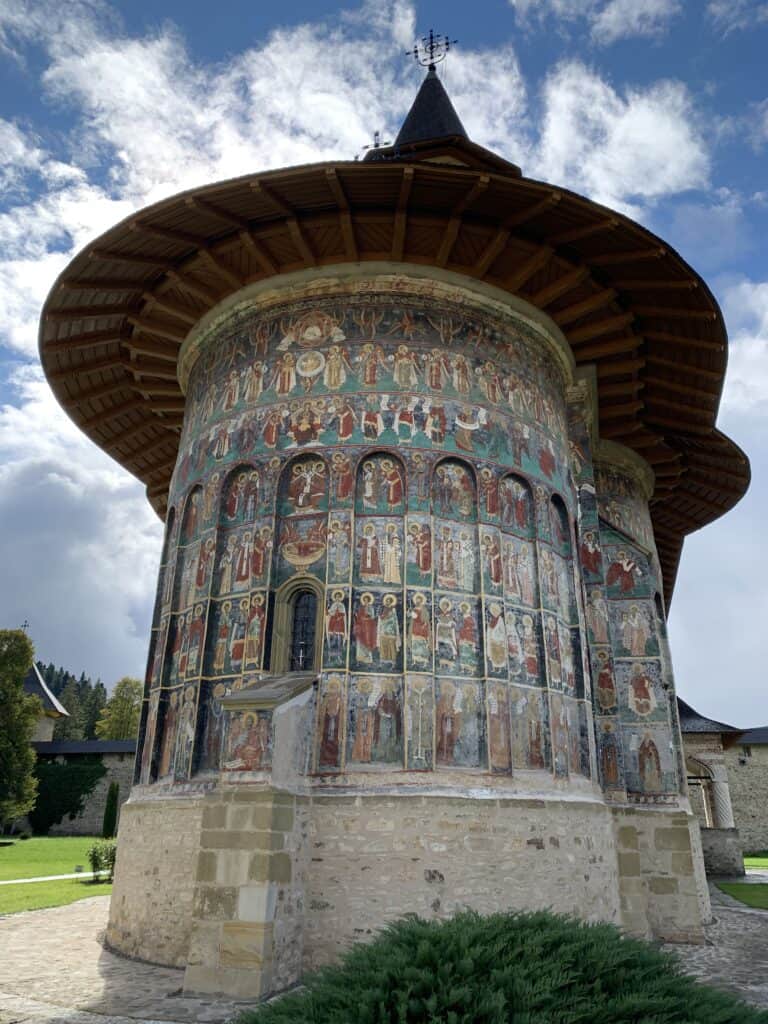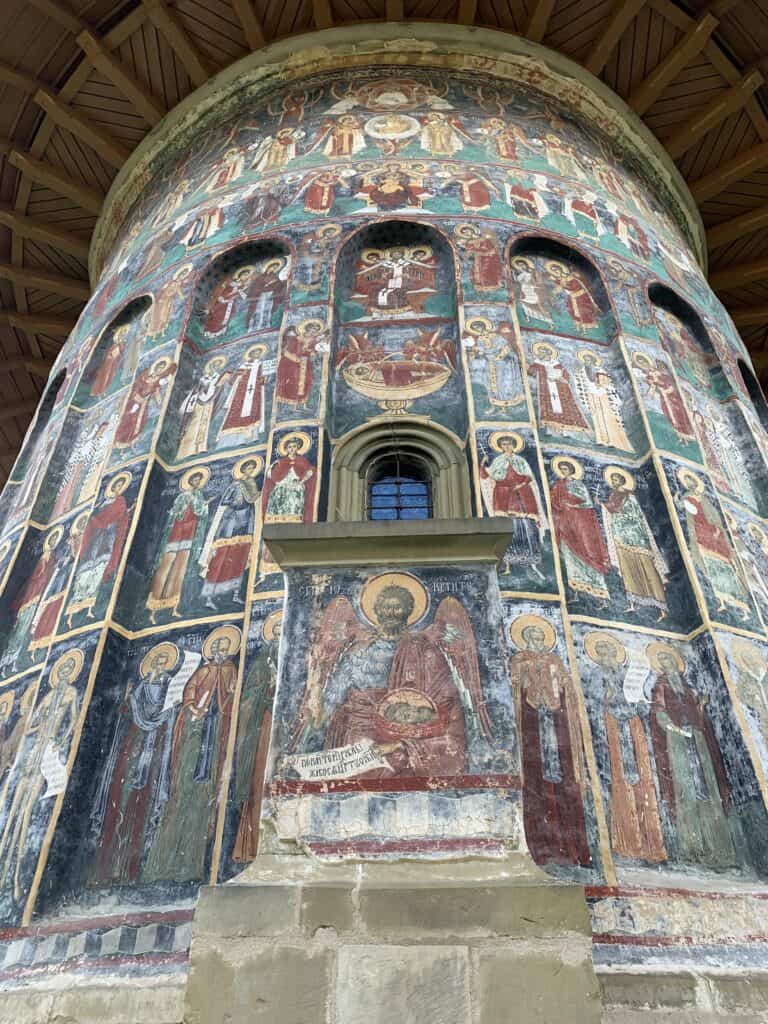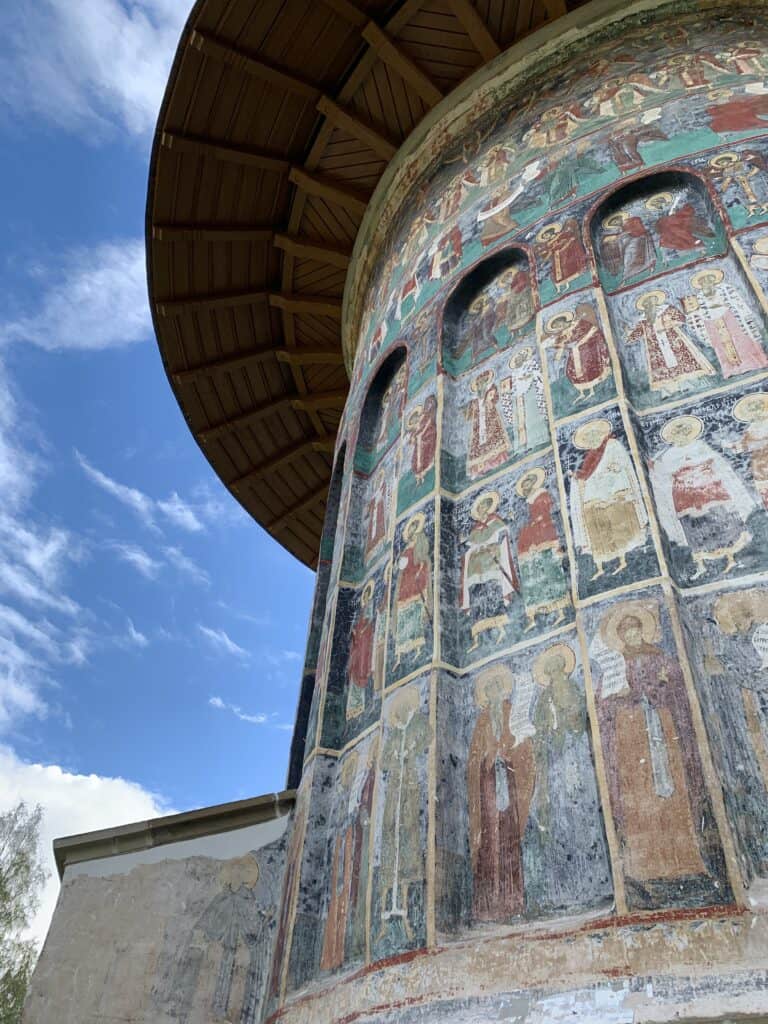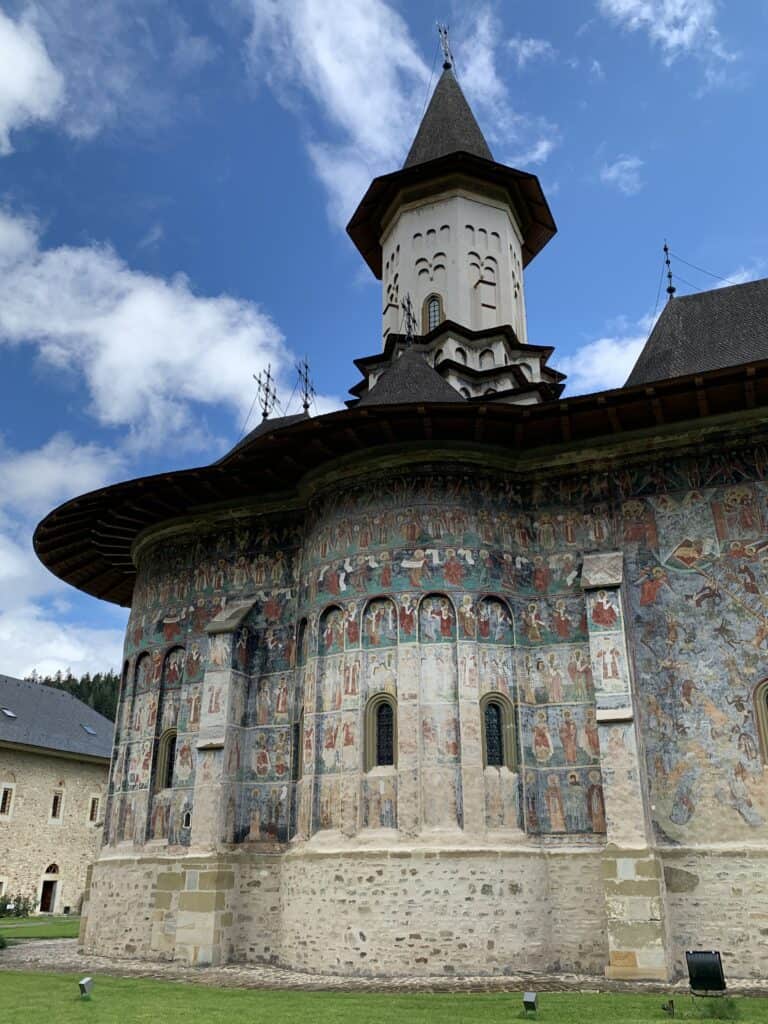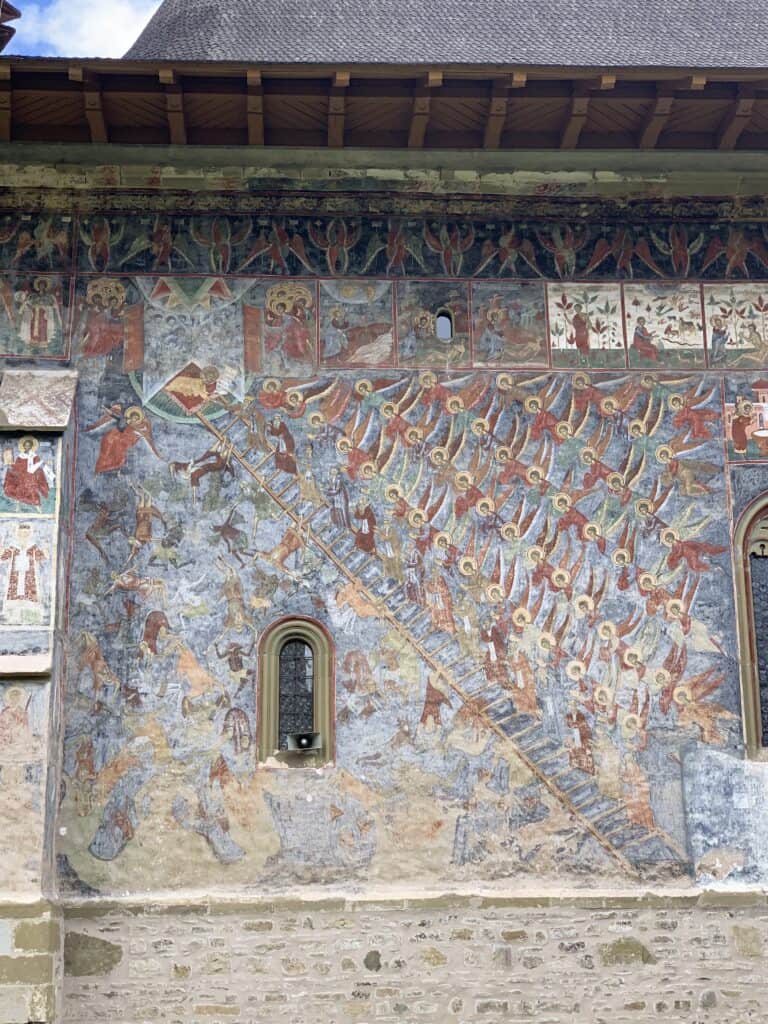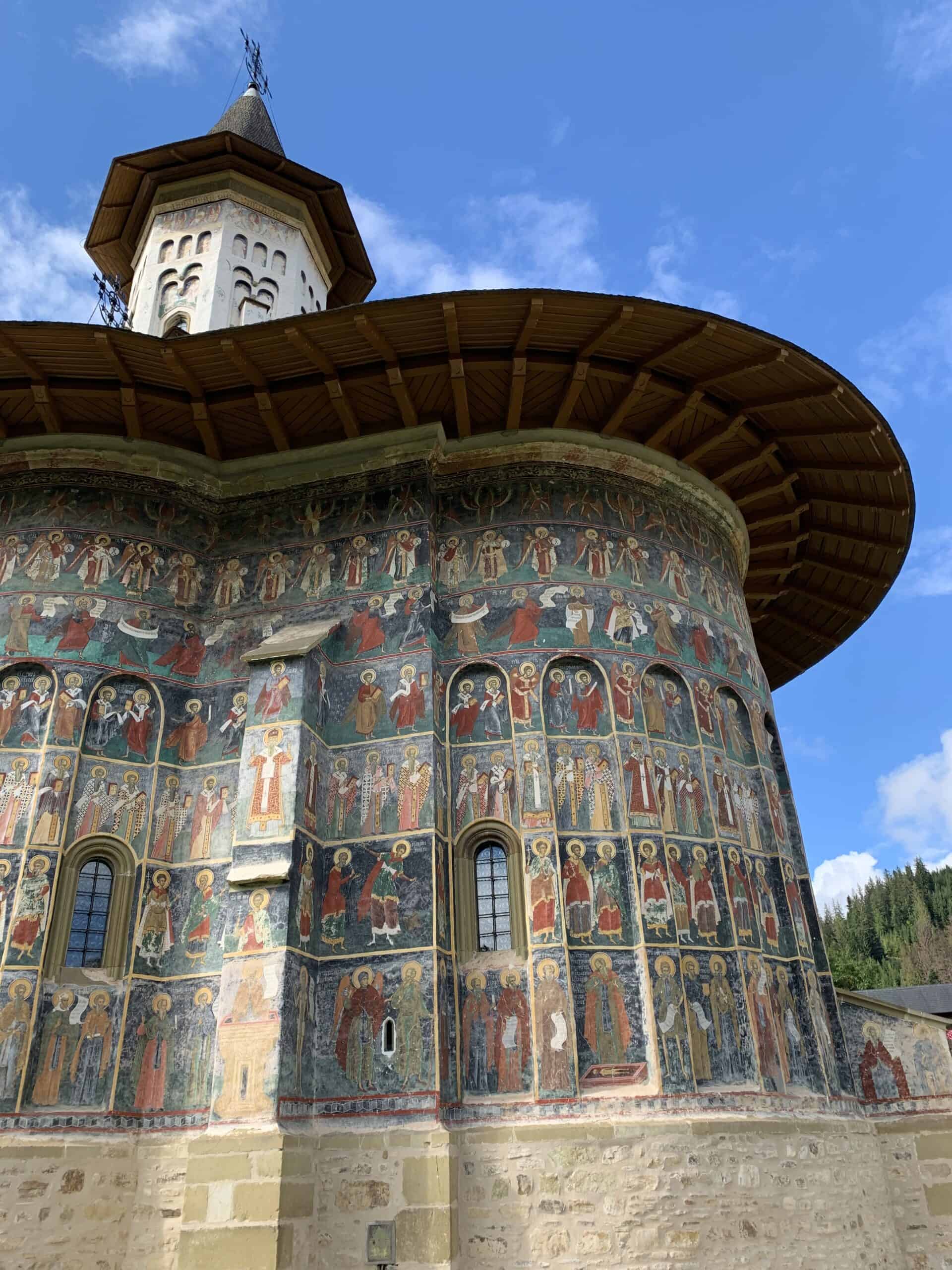
The Monastery of Sucevița, inscribed by UNESCO among the World Heritage Sites, is located in the north-eastern part of Romania about 60 km from Suceava.
An Orthodox monastic complex dedicated to the production of manuscripts and printed books was built in 1585 as a seat.
The architecture of the Monastery finds the fusion of Byzantine and Gothic elements but remains substantially in line with the other painted churches of northern Moldova.
The inner courtyard of the Monastery is protected by thick and high walls almost 100 meters long reinforced with 5 towers that surround the entire complex.
Frescoed between 1595 and 1604, the Sucevița Monastery has the largest number of painted images and is frescoed with themes depicting episodes from the Old and New Testaments.
The frescoes of the Sucevița Monastery are the best preserved by the group of Moldovan churches with external frescoes and is the only one that keeps the paintings on the north side, where the “Staircase of Virtues” is represented. This scene represents the battle between good and evil, man’s attempt to reach perfection in order to recover lost faith by falling into sin.

